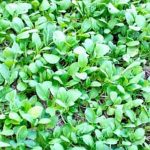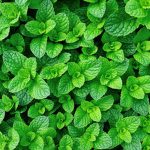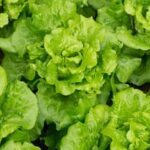Gardening vegetables for survival is a crucial aspect of self-sufficiency in any emergency or long-term survival situation. When faced with the necessity of providing for oneself and one’s family, the ability to grow one’s own food can make a significant difference.
In this article, we will explore the importance of gardening for survival and investigate whether the effort is truly worth it in terms of meeting nutritional needs, achieving self-sufficiency, and contributing to a sustainable lifestyle.
Amidst the increasing concern over food security and potential disruptions in the supply chain, many individuals are turning to gardening as a means of ensuring access to fresh produce. Not only does vegetable gardening provide a source of nutritious food, but it also offers a sense of empowerment and independence. In exploring the benefits of gardening vegetables for survival, we will delve into the nutritional advantages and highlight its role in promoting self-reliance.
Furthermore, we will examine the cost-effectiveness of vegetable gardening for survival, considering both financial aspects and the environmental impact. While there may be initial investments involved in setting up a garden, we will assess how these costs compare to the potential long-term savings and discuss how gardening contributes to a sustainable lifestyle. Join us as we delve into the world of survival gardening and discover its significance in today’s uncertain times.
Benefits of Gardening Vegetables for Survival
Gardening vegetables for survival offers a multitude of benefits, particularly in terms of nutrition and self-sufficiency. In a survival scenario, access to fresh produce can be limited, making it essential to have a reliable source of vegetables for sustenance.
By cultivating a variety of vegetables, individuals can ensure that they have access to essential nutrients needed for optimal health and well-being. This level of self-reliance allows individuals to maintain their nutritional needs without having to rely on external food sources.
Furthermore, gardening vegetables for survival promotes self-sufficiency by reducing dependence on grocery stores or other food suppliers. In times of crisis or emergency, having the ability to grow one’s own food can be crucial for long-term sustainability. By producing their own vegetables, individuals are able to take control of their food supply and reduce the risk of food shortages during challenging times.
In addition to providing necessary nutrients and promoting self-sufficiency, gardening vegetables for survival also offers psychological benefits. The act of tending to a garden and witnessing the growth and progress of plants can be emotionally fulfilling. It provides a sense of purpose and accomplishment, which is valuable in maintaining mental resilience during survival situations. Overall, the benefits of gardening vegetables for survival go beyond mere sustenance; they encompass physical well-being, self-reliance, and emotional fortitude.
Cost-Effectiveness
Reducing Grocery Expenditure
One of the most significant financial benefits of gardening for survival is the reduction in grocery expenditure. As the cost of living continues to rise, many individuals and families are looking for ways to save money on their food expenses.
By growing vegetables at home, individuals can significantly cut down on their monthly grocery bills. The initial investment in seeds, soil, and gardening tools is minimal compared to the long-term savings that can be achieved through a successful vegetable garden.
Investment in Self-Sufficiency
In addition to reducing grocery costs, gardening for survival represents an investment in self-sufficiency. In times of economic uncertainty or supply chain disruptions, having the ability to produce your own food can be invaluable. By cultivating a diverse range of vegetables at home, individuals can mitigate the impact of inflation and food shortages on their household budget. Furthermore, the skills acquired through gardening contribute to greater self-reliance and independence, reducing reliance on external food sources.
Health-Related Cost Savings
Another financial aspect of gardening for survival is the potential health-related cost savings. By consuming fresh, organically-grown vegetables from their own garden, individuals may experience improvements in their overall health and well-being.
This could result in reduced medical expenses over time, as a diet rich in homegrown vegetables has been associated with lower risk of chronic diseases such as heart disease and diabetes. Therefore, the financial benefits of gardening extend beyond immediate cost savings to potential long-term healthcare savings as well.
Environmental Impact
Gardening can have a significant positive impact on the environment, making it an essential aspect of sustainable living. Growing vegetables at home reduces the carbon footprint associated with food production and transportation. In addition, it promotes biodiversity by creating mini-ecosystems in your backyard or balcony. Utilizing organic gardening methods, such as composting and natural pest control, can also minimize the use of harmful chemicals that contribute to soil and water pollution.
According to the Environmental Protection Agency (EPA), home gardening can help mitigate climate change by reducing greenhouse gas emissions. The EPA states that residential lawns and gardens in the United States cover an estimated 21 million acres, making them a potential source of carbon sequestration. By converting part of this space into vegetable gardens, individuals can actively participate in carbon capture and reduce their environmental impact.
In terms of water conservation, growing vegetables at home allows for efficient use of resources. A well-designed garden with proper irrigation and mulching techniques can minimize water loss through evaporation while promoting healthy plant growth. This is particularly crucial in regions affected by drought or water scarcity, where responsible water management is essential for sustainable living.
| Environmental Impact | Data |
|---|---|
| Carbon footprint reduction | By growing vegetables at home, individuals can reduce their carbon footprint associated with food production and transportation. |
| Biodiversity promotion | Gardening creates mini-ecosystems that support biodiversity in urban and suburban areas. |
| Climate change mitigation | Home gardening contributes to carbon sequestration, helping mitigate climate change. |
| Water conservation |
Tips for Successful Vegetable Gardening in a Survival Scenario
When it comes to gardening vegetables for survival, one of the most critical aspects is selecting the right seeds. In a survival scenario, it’s essential to choose seeds that are open-pollinated and heirloom varieties.
These types of seeds can be saved and replanted year after year, ensuring a sustainable source of food for the long term. Additionally, consider the climate and soil conditions in your area when selecting vegetable seeds, as certain varieties may be better suited for specific environments.
Once you have selected the appropriate seeds, it’s crucial to plan and prepare your garden space effectively. Ensure that the chosen location receives adequate sunlight and has access to water sources. Begin by properly preparing the soil by removing any existing vegetation, tilling the soil, and adding organic matter such as compost or mulch. This will provide a healthy foundation for your vegetable garden to thrive.
After planting your selected vegetable seeds, proper care and maintenance are essential for successful gardening in a survival scenario. Regular watering, weeding, and monitoring for pests and diseases are all crucial tasks to ensure a bountiful harvest. Pay attention to crop rotation techniques to prevent depletion of nutrients in the soil and minimize the risk of disease buildup.
| Vegetable Gardening Tips | Benefit |
|---|---|
| Select open-pollinated and heirloom seeds | Ensures sustainable source of food |
| Prepare soil with organic matter | Provides healthy foundation for garden |
| Implement crop rotation techniques | Maintains soil health and minimizes disease risk |
Overcoming Challenges
Understanding Common Pests and Diseases
One of the biggest challenges that gardeners face when cultivating vegetables is dealing with pests and diseases that can wreak havoc on their crops. Common pests such as aphids, caterpillars, and beetles can quickly destroy a thriving vegetable garden if not properly managed.
Additionally, diseases like powdery mildew and blight can spread rapidly, leading to crop failure. It is essential for survival gardeners to familiarize themselves with the signs of common pests and diseases in order to take proactive measures to prevent infestations.
Implementing Environmentally-Friendly Pest Control Methods
In a survival scenario where access to chemical pest control products may be limited, it is crucial to employ environmentally-friendly pest control methods. One effective approach is integrated pest management (IPM), which involves using a combination of techniques such as crop rotation, companion planting, and natural predators to keep pest populations in check. This sustainable approach not only helps protect the environment but also promotes the long-term health of the garden ecosystem.
Adapting to Environmental Factors
Survival gardening often means working with whatever environmental conditions are present, which can pose unique challenges. From extreme weather events to soil quality issues, there are many factors that can impact the success of a vegetable garden.
Building raised beds or utilizing container gardening techniques can help mitigate poor soil conditions, while installing protective covers or shade structures can offer shelter from harsh weather conditions. In a survival situation, adapting to environmental factors becomes essential for maintaining a reliable source of food through vegetable gardening.
Integrating Gardening Into a Survival Plan
When it comes to preparing for survival situations, self-reliance and food security are crucial factors to consider. By integrating gardening into a survival plan, individuals can take proactive steps towards ensuring their own well-being and that of their families. Here are some key points to consider when incorporating gardening into a comprehensive survival strategy:
- Self-Reliance: Gardening vegetables allows individuals to become more self-reliant in terms of food production. Instead of depending solely on external food sources, cultivating one’s own vegetables provides a sense of independence and control over one’s sustenance.
- Food Security: In times of crisis or emergency, access to food may become limited. By having a well-maintained vegetable garden, individuals can secure a sustainable source of nutrition for themselves and their loved ones, reducing the impact of potential food shortages.
- Sustainability: Incorporating gardening into a survival plan aligns with the principles of sustainability. Growing vegetables at home reduces the reliance on commercial agriculture, minimizing the environmental footprint associated with transporting and packaging produce.
In addition to these benefits, prioritizing vegetable gardening as part of a survival plan fosters a deeper connection with nature and promotes a healthier lifestyle. By actively participating in the cultivation of one’s own food, individuals can gain valuable skills and knowledge that will serve them well in times of need. Ultimately, integrating gardening into a survival strategy contributes to greater resilience and preparedness for unexpected challenges.
Case Studies
Gardening vegetables can be a critical component of survival in various situations, as demonstrated by real-life case studies. These examples provide insight into how individuals and communities have relied on vegetable gardening to sustain themselves during challenging times.
Some notable case studies include:
1. Victory Gardens During World War II: In response to food shortages and rationing measures during the war, many people across the United States, United Kingdom, Canada, and other countries cultivated “Victory Gardens” to supplement their food supply. These gardens not only helped alleviate strain on the public food distribution system but also boosted morale and fostered a sense of unity within communities.
2. Urban Gardening in Times of Crisis: In recent years, urban gardening initiatives have played a crucial role in providing fresh produce to residents facing economic hardship or natural disasters. For example, following the devastation caused by Hurricane Katrina in New Orleans, community gardens sprang up across the city to address food insecurity issues and promote self-sufficiency.
3. Survival Situations in Remote Areas: Individuals stranded or living in remote wilderness areas have relied on vegetable gardening as a means of obtaining essential nutrients while waiting for rescue or establishing a sustainable long-term solution. By cultivating hardy vegetables such as potatoes, carrots, and greens, these individuals were able to increase their chances of survival.
The success stories from these case studies underscore the importance of vegetable gardening as a practical and effective survival strategy. By learning from these experiences, individuals can better understand how to integrate gardening into their own preparedness plans. Whether facing wartime rationing, urban crises, or wilderness survival scenarios, the lessons from these case studies emphasize the invaluable role that gardening vegetables can play in ensuring food security and self-reliance.
Conclusion
In conclusion, it is evident that gardening vegetables is indeed worth it for survival. The benefits and importance of vegetable gardening for survival cannot be overstated. Not only does it provide a source of nutrition and promote self-sufficiency, but it also offers a cost-effective way to obtain food in a survival scenario. Additionally, the environmental impact of gardening contributes to a sustainable lifestyle, making it a valuable skill to possess in the face of potential crises.
By engaging in vegetable gardening, individuals can take control of their food source and reduce their reliance on external sources, promoting self-reliance and food security. The case studies presented in this article demonstrate how vegetable gardening has played a crucial role in saving lives during survival situations, further emphasizing its significance.
As such, integrating vegetable gardening into a survival plan is essential for anyone seeking to prepare for unforeseen circumstances. With proper knowledge and preparation, individuals can successfully overcome challenges such as pests, diseases, and environmental factors to ensure a steady supply of fresh produce. In summary, the benefits and importance of gardening vegetables for survival make it an invaluable skill that should not be overlooked.
Frequently Asked Questions
Do You Really Save Money Growing Your Own Vegetables?
Growing your own vegetables can save you money in the long run, especially if you have the space and time to dedicate to a garden. While there are upfront costs for tools, seeds, and soil, the ongoing savings from not having to purchase produce from the store can add up over time.
Additionally, homegrown vegetables often taste better and can provide a sense of satisfaction and fulfillment.
What Is the Best Vegetable to Grow for Survival?
When considering the best vegetable to grow for survival, it’s important to choose something that is nutritious, easy to grow, and yields a high quantity of food. In this case, it’s hard to go wrong with potatoes.
They are relatively low-maintenance, store well after harvesting, and provide essential carbohydrates and nutrients. Plus, they can be grown in various climates and soil types, making them a versatile choice for anyone focused on survival gardening.
What Every Survivalist Should Grow in His Backyard?
For survivalists looking to grow their own food in their backyard, it’s important to focus on crops that are easy to maintain, provide essential nutrients, and yield a high amount of food. Apart from potatoes which we already mentioned earlier as a good choice for survival gardening,, other crops like beans (such as green beans or bush beans), leafy greens (like kale or Swiss chard), and root vegetables (such as carrots or beets) are also great options because they are relatively easy to grow and harvest while offering valuable vitamins and minerals needed for overall health.
These plants are typically resilient enough to thrive under different growing conditions as well.

If you’re looking to get into vegetable gardening, or are just looking for some tips on how to make your current garden better, then you’ve come to the right place! My name is Ethel and I have been gardening for years. In this blog, I’m going to share with you some of my best tips on how to create a successful vegetable garden.





